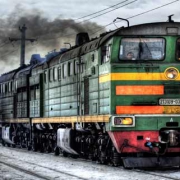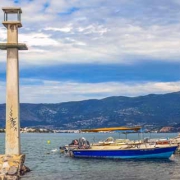We see the LNG supply – but where is the demand?
Those who have seen the first installment of the famous “Hellboy” series will remember the scene where professor Broom sees Kroenen coming down the stairs and asks the all important question “I see the puppet but where is the puppet player?”. Kroenen was merely a puppet with just the modicum of a free will. The real string-puller behind this particular puppet was Rasputin who aimed at unleashing Armageddon on earth.
The twist in the scene was that Kronen was built up over quite some time as an independent character, a player in its own right. The viewer of the film was under the impression that he had his own agenda that merely matched with the plans of someone else. Only at this moment, we all became aware that Kroenen was a mere automaton that executed the will of his master – Rasputin.
In LNG, we have stared at the supply side for a decade now – as if it was the mythical snake Ka, from the jungle book, and we just could not take our eyes off it anymore. The picture was so fascinatingly bleak, horrible, dangerous – anyone with a stake in the LNG game just shivered when thinking of those suppliers. And anyone not yet having put his foot in the water but with some kind of curiosity of LNG just spoke of suppliers in a hushed tone.
LNG suppliers are a bit like Kroenen from the film, fascinating in their horror to look at but everyone always knew that there was no meaningful interaction possible with those folks. It was their way – or the highway. If you have ever been in a negotiation with Qataris (or indeed anyone else) more than 30 months ago, you know what I am talking about. However, understanding the movements of the puppet just requires looking down the soul of the string puller and as much as we wanted to ignore it, the final string puller is always the market. If there is no one to buy what you have, your wares are worthless.
Everyone is a bit taken aback on how quick the gods of LNG were to fall. Having the prospect of “forever buyers” that would scoop up whatever drop of LNG that would be produced at virtually any price pushed projects, that are more expensive and more outlandish that anyone could ever have imagined just a decade ago. Decades of cost reductions on the liquefaction side were wiped out seemingly overnight and production cost for LNG ballooned to obscene amounts.
The world is awash in LNG now and those last crazy 10 years have firmly implanted the notion that LNG must be something super-expensive in our minds. Luxury fuel for luxury buyers except that, those luxury buyers have become a luxury themselves. A luxury to sellers of LNG as in a moment, they all seem to have disappeared with the wind. Not long ago, the buyer was something project developers did not spend a lot of time on. The queue was long so one just picked those that offered the juiciest deals. Yes, selling LNG actually was that easy – once upon a time.
Now, there is so much of the stuff that soon there will be orphan cargoes en masse. And all those with no home will gravitate to the one place that can absorb large volumes of LNG at virtually no notice if only the price is right – North Western Europe.
However, even if we assumed that all cargoes with no home will find a place to get discharged in North Western Europe, this also means that demand is real low as NW-Europe will only offer the lowest price that any LNG cargo can ever hope to fetch which is way below the full cost basis for many of the LNG cargoes about to become available. Europe has a pipeline option – a real and credible one.
What’s really missing is a market that offers premium prices as they existed just 24 months ago. Many Australian producers are in excruciating pain with anything below USD 10.- per MM Btu. That’s a steep price for some clean energy for sure and that’s also a price that will never be able to compete with some Middle Eastern producers on a cost basis alone, but we should not forget that those plants have been built for operations that last far longer than the usual 20 years.
LNG liquefaction plants stop operating because feed gas runs out like the old Indonesian plants in Arun and in Bontang or even like the much newer Egyptian plants. Assuming that the feed gas keeps coming, plants can operate well beyond their 40th anniversary with very little in terms of rebuilding or even major refurbishment.
This means that many of the newer projects have a vested interest in amplifying demand now, so they can reap the rewards after some lean years of operation which some IOC players with very unhinged portfolios are already doing. The question is – is there enough of it?
In their despair, sellers of LNG hope for FSRU’s as some sort of quick fix opening up new markets such as Pakistan or Lithuania. And it’s true to a certain extent – floating solutions can really provide some sort of entry ticket into a hitherto inaccessible market but it’s not going to meaningfully dent the biblical wave of LNG coming mainly from Australia and from the US.
Just for perspective – even without the new supply from the US the world would be in LNG shock mode right now. The planet has not yet absorbed LNG that was once meant to go to the US when this was touted to become the biggest LNG receiving market ever. We all know the story – shale killed that but it’s so easy to forget.
It was mainly Fukushima which had absorbed this overhang quickly. And this overhang was mainly coming from Qatar, Nigeria, Equatorial Guinea but also the new trains in Algeria and Angola as well as LNG from places like Norway, Egypt, Trinidad, Peru and even some Asia produced cargo. It all concentrated upon Japan after Fukushima since it did not find a home in the US anymore. As cruel as it sounds, Fukushima came at the perfect moment as the LNG world was already quite aware that shale is going to make the US LNG market dissolve into thin air and urgently needed an exit strategy.
However, this blessing (for LNG at least) was nothing but a curse in disguise as it just temporarily absorbed LNG that was already here and additionally it spawned one of the most grandiose LNG building programs ever. Australia and the US became LNG superpowers in their own right and threw tsunamis of LNG on an already pretty impressive bow wave caused by the default of the US as a buyer. And now, after the shock of Fukushima wanes, Japan re-balances its energy portfolio and goes for more coal in order to replace nuclear base-load with coal base-load. This brings LNG consumption down, slowly but surely. The advent of LNG resellers from Japan is potent proof.
All this LNG joins forces now to submerge the planet. And all the new markets we can see now – the Pakistan’s, the Jordan’s, the Egypt’s, the Lithuania’s and Poland’s and Ghana’s and whatever else is cooking up right now are not going to soothe the immediate pain. Markets need time to absorb and to change. Let them swallow 20 BCM – even 30. What’s that compared to a wave of 3 digit BCM without a place to go to every year?
We have made this situation over close to a decade – expect the consequences to be felt for close to a decade as well. But maybe this extreme overhang is needed in order for LNG to go to the next stage and go from mere “pipeline gas replacement” to be the fuel of the planet. The target is diesel, gasoline and bunker fuels. Maybe it needed a calamity in order to not only extend the geographical reach of LNG but also to jump into a new paradigm. The golden age of gas is still to come. But don’t tell IEA.















Leave a Reply
Want to join the discussion?Feel free to contribute!